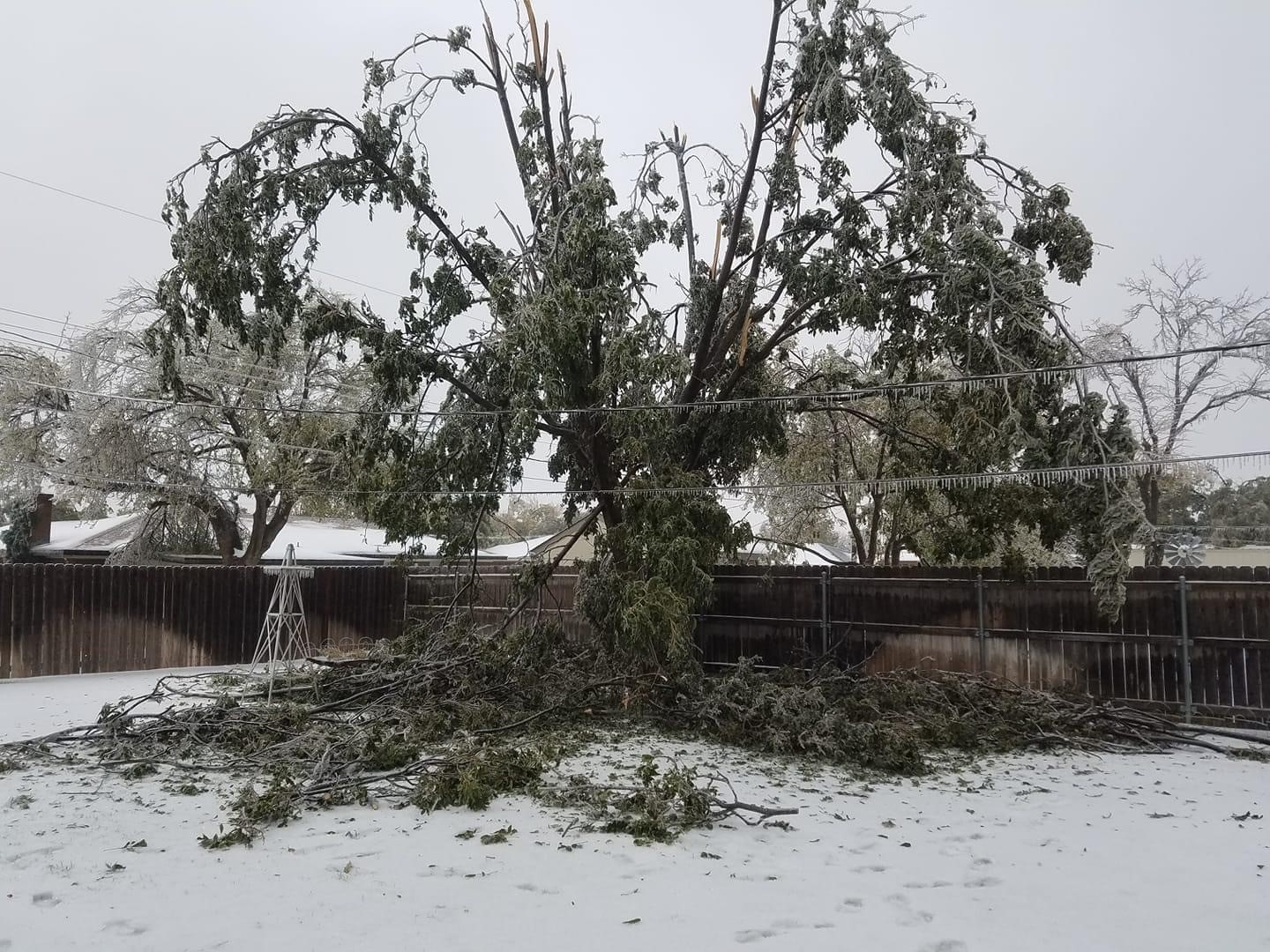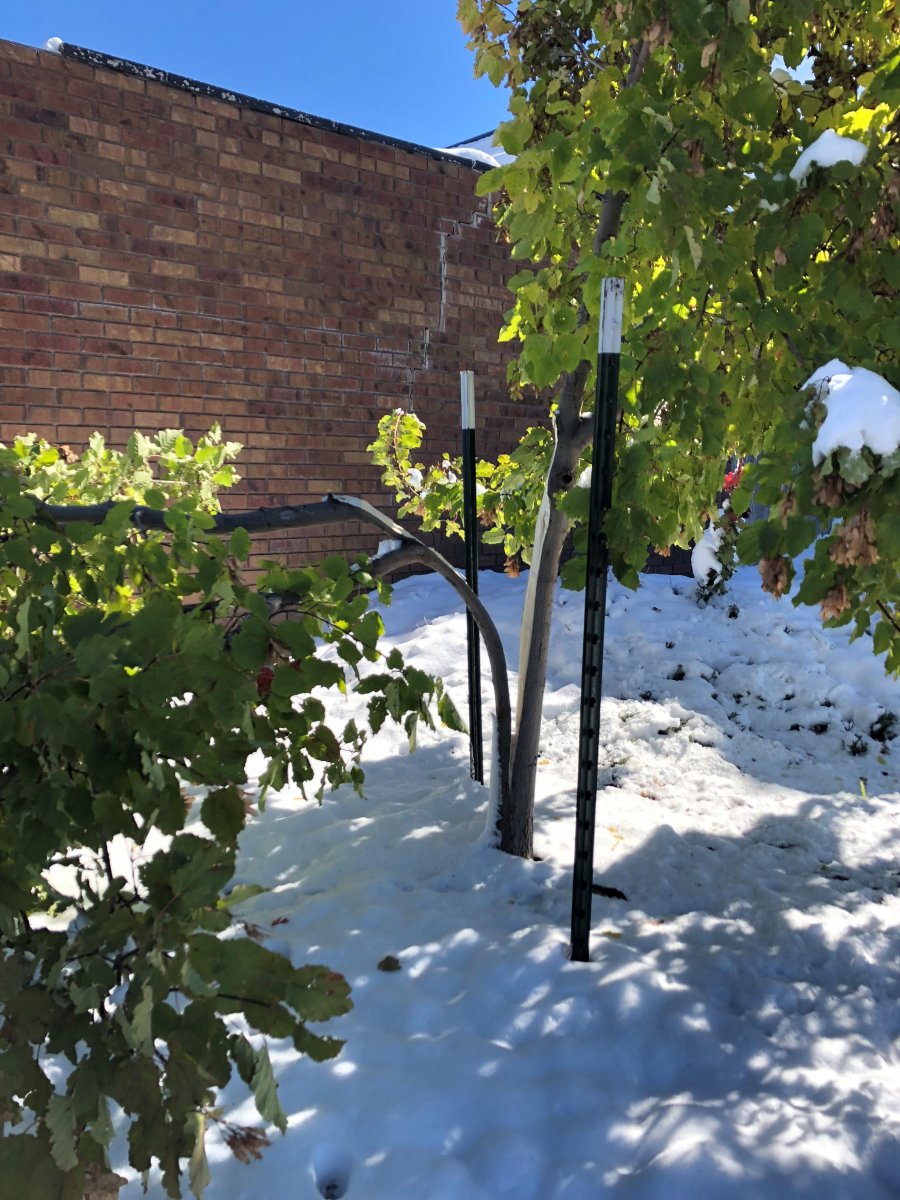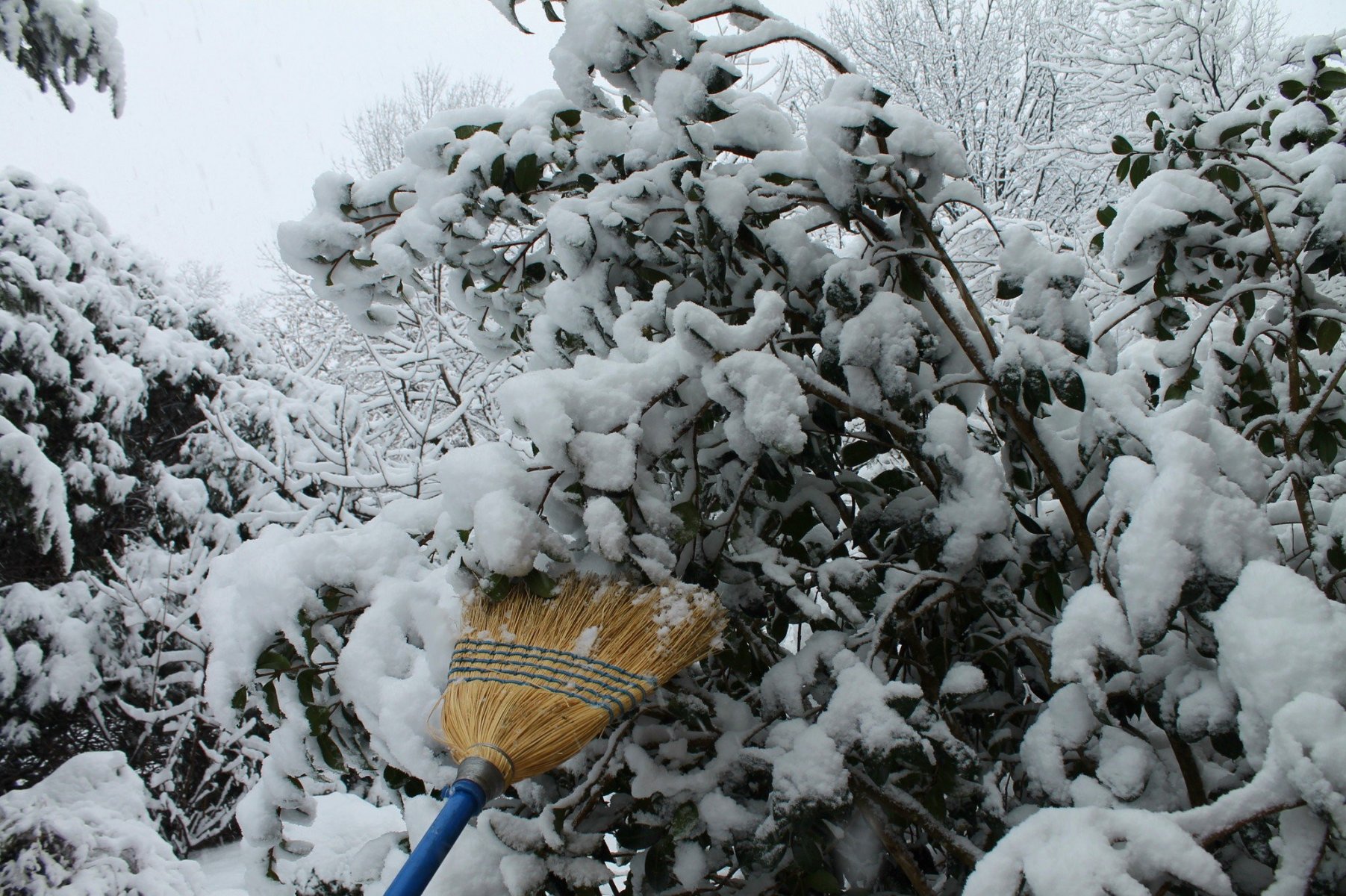
Nebraska’s winters have been known to throw a curveball or two with unique storms that produce excess amounts of snow or possibly ice. When these weather events occur, trees can expect some serious damage. Many times the extent of damage relies on the seasonal timing of the storms and the temperatures they bring.
It always snows, what's the big deal?
In 2018 and 2019, Nebraska experienced unusual weather patterns with sharp temperature drops as early as September and October, which did not allow the trees the time to properly prepare themselves for the winter to come. In both years, many parts of the state experienced blizzards and ice storms earlier in the winter in November or December and again later in the winter in February and March. Many recall the damage done by the blizzard storm dubbed the ‘Bomb Cyclone’ of March 2019. (learn more: Bomb Cyclone)
When high pressure in the atmosphere builds rapidly, heavy snowfalls paired with high winds can occur, creating a recipe for disaster. Trees that are improperly cared for are more likely to have damage and breakage. Weakened structures from poor or no pruning and pre-existing wounds under the weight of wet heavy snows, ice loads, and high winds can push the tissues to their breaking point. Ultimately the trees become a serious concern for the safety of any person or property nearby.
Types of damage

The most common types of tissue damage that can happen to trees under the weight of snow or ice loading include stress fractures, twisting, complete breaks, entire splitting and tissue damage similar to bruising in which case damaged tissue cannot recover. Trees do not heal wounds, they can only seal them if the correct meristematic cells (which are responsible for multiplying and expanding), are available to grow new tissue over the openings or internal damage. These cells are found in branch collars, branch unions, branch and root tips, buds, nodes of stems, and in a fine layer in the trunk known as the cambium.
Stress fractures can be one of the less obvious wounds created by snow or ice loading. They occur when the weight causes the tissue along the top of a branch to become stretched while the tissue along the bottom is compressed. This typically creates a split in the wood horizontally within the branch when the weight load is gone. From the ground, this damage is rarely detectable in large shade trees. When left unmanaged, these types of wounds can be the cause of a complete break in the next storm.
Open wounds provide pathways for microorganisms to enter the vascular system of the tree, potentially infecting the tree with a harmful fungus or bacteria. Regular care of trees is recommended to manage the damaged or dead tissues to prevent future problems. Proper removal of damaged branches is key to make sure the correct growth cells are near the intentional wound from a pruning cut in order to allow the tree to properly seal off the opening. It is best to allow trees to complete their natural processes to seal wounds after proper pruning cuts are made.
When to remove snow

Evergreens are typically more prone to damage from snow and ice accumulations as they have more surface area with their foliage to collect and hold the snow and ice. In the winter all tree and shrub tissue can be brittle, so it is very important to be gentle when making attempts to remove the weight load of snow.
When light snows occur, it is not necessary to remove the accumulation from the branches. However, when wet, heavy snow begins to accumulate on branches, now is the time to step in and help trees and shrubs. When conditions are safe, regularly remove the snow throughout the storm, or wait until the storm clears.
When removing snow it is very important to not use any top-down motions. A hand or a broom can be used with gentle upward motions to lift the branch and very gently shake the snow off. If the tree is under a great deal of snow, start with the lowest branches and move upward, and if necessary repeat again from lowest to highest. Try to avoid bouncing motions, support the branch when gently shaking it so it does not bounce back after the removal of the weight; being brittle, it could snap and/or create internal damage.
Do not stand below the tree, it is unsafe as branches could snap or heavy loads of snow could fall. It is absolutely not recommended to climb ladders to reach the tops of trees in snowy or icy conditions, only work from the ground. If concerned about damage to trees that cannot be reached from the ground, it is best to contact a certified arborist to safely care for the tree.
If ice accumulates on trees or shrubs, unfortunately, there is nothing to do other than let it naturally melt off. Most methods to remove ice would cause more damage. The use of artificial heat can cause damage to the tissues and deicing products have chemicals in them that are harmful to the trees.
What to do when tree is damaged?
If trees are damaged/wounded:
- Be aware of the surroundings for safety reasons, power lines etc…
- If unsure about the trees’ safety/health, contact a certified arborist
- Only attend to trees or branches that pose an immediate hazard/risk/problem
- Leave insignificant damage to be managed in late winter
- Pruning in early winter could expose trees to more freeze damage
- Pruning just before dormancy breaks is best
- Annual checkups by a certified arborist can improve the structural integrity and remediate any damage unseen from the ground
Search for Certified Arborists on the Nebraska Arborists Association website at https://nearborists.org/search-for-an-arborist/ and the International Society of Arboriculture’s website at https://www.treesaregood.org/findanarborist.